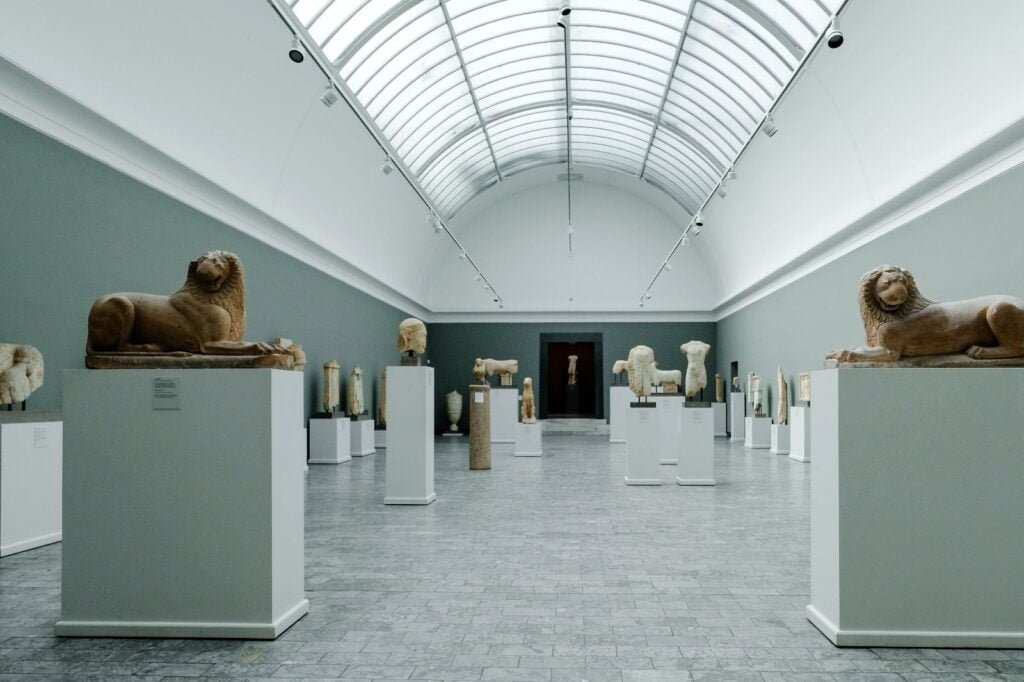It’s all relative, humidity…
Managing humidity and temperature at museums are very important to keep the valuable stuffs displayed over there for the next generations.
Firstly, what’s RH?
RH (relative humidity) is presented as a percentage, it’s not a straight measure of how much water is in the air. Air is capable of carrying higher levels of water the warmer it gets; conversely cooler air can carry less moisture. The percentage displayed by a RH meter is actually a percentage of the maximum saturation of the air at the current temperature. So, there will be more water vapour at 60% RH when the temperature is 25°C than there would be at 15°C.
And what’s dew point?
If air is cooled, whilst the moisture content is kept constant (i.e. in a sealed display case), to the point where the RH reaches 100%, the water vapour will condense. This is the dew point. Further reductions in temperature will lead to further water condensing out as the air keeps its saturation point at 100%. Imagine when the heating goes off/on, sun goes down, sudden changes in temperature can push RH up and down drastically.
What are the consequences of failing to manage relative humidity?
Generally, it is accepted that an RH of between 40% and 60-65% is suitable for a museum environment. Here are some of the ways that objects can be affected by:
- Unstable RH (Fluctuations over +/-3% within a 24hr period)
An unstable level of humidity can lead to hygroscopic materials to swell (in high humidity) and contract (in low humidity). This swelling and contraction of the material causes stress on the connecting fibres, gradually weakening them causing embrittlement, flaking oil paintings are a good example of expansion and then subsequent contraction. Some materials may show some efflorescence of salts as they crystallise after being dissolved. Fluctuations shouldn’t be more than +/- 3% relative humidity within a 24-hour period.
- High RH
As well as allowing hygroscopic materials to swell, high RH can also lead to mould or fungal growth at levels over 70% and encourage pests. Emulsions on photographs can adhere to sleeves or other photographs. Metals can rust as a result of high moisture content. High moisture levels are also linked with the ‘chiselling’ of glass, producing small cracks in the surface which appear to haze the finish.
- Low RH
Low RH causes materials to dry out and contract. Glues and repairs may dry out become brittle and break, this includes veneers on wooden objects which may lift. It becomes clear that stability is an important factor in RH management and provided the environment is in the accepted 40%-60% range, your collection should be safe.
How can you manage RH?
First, you need to carefully consider the appropriate level of relative humidity that your objects will require. Museums and Galleries Scotland have a good guide for specific exhibit requirements, Sudden changes are not desirable, so it’s always best to monitor and determine the existing conditions and what measures you can take generally to improve levels, such as closing doors and windows, and additional ventilation or heating.
Monitor humidity levels
There are various methods of measuring relative humidity, from basic humidity cards, through to hygrometers and datalogger devices which offer higher levels of accuracy.
- Humidity Cards – A basic visual relative humidity scale that can be inexpensively added to display cases and storage areas. Accurate to 10%+/-.
- Hygrometers – For more accurate measurement of relative humidity a (calibrated) digital hygrometer is by far the best way to go. For combined measurement of temperature, a thermo hygrometer will also give you a temperature reading. Hygrometers are relatively inexpensive, our cheapest digital thermo hygrometer is only £16, they become more expensive in-line with their accuracy and range, as well as overall build quality – we recommend our museum specification unit here.
- Dehumidifiers can be used in larger open areas and storage facilities, if in a room without drainage it’s important to consider how you will manage the recovered water. Some units, such as this one, are capable of pumping it away, even up to a height of 4.3 meters. Otherwise they will have a storage vessel that once full will stop the dehumidifier from running, this may not be ideal should the unit be left to run unattended.
Temperature
So, we know the relationship between temperature and relative humidity, however, does that mean that we can simply concentrate on that RH figure and ignore the temp? Err. No. But managing a stable temperature will make the management of RH levels far easier. The ideal temperature for preservation of archival documents is between 16°C -19°C. Increases in temperature can also have an adverse effect on collections. It is estimated that for every 10°C increase in temperature, chemical reactions in paper double. Heat also causes expansion and contraction which, regardless of relative humidity level, can lead to damage to collections. Use of a thermo hygrometer will help you to manage both temperature and relative humidity in a single meter. Again, as with relative humidity, consistency is key and maintaining a stable temperature is important.
Everywhere you go, take the weather with you. One thing that you cannot currently log with a datalogger is the weather, however correlation with external environments is also helpful when analyzing datasets. Consider using a third-party meteorological source to add context to reports.


